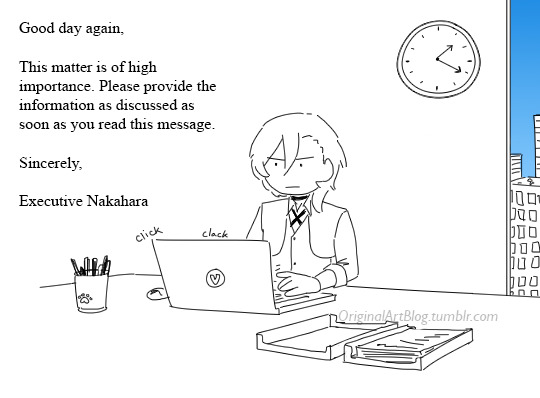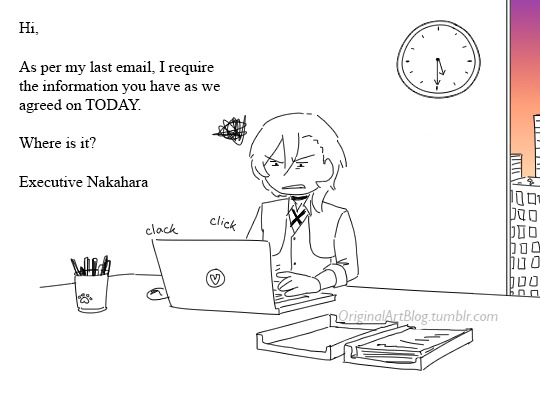#business and management
Text
Transform Your Business Dynamics with STERP – Pioneering ERP Solutions for Manufacturing Excellence
Unlock unparalleled efficiency and innovation in your manufacturing processes with STERP (ShantiTechnology), your trusted partner in ERP solutions for manufacturing. Our cutting-edge ERP software for the Manufacturing Industry, ensuring seamless operations, enhanced productivity, and optimal resource utilization. STERP provides ERP for Software Development Company which manages projects, track resources, and enhance collaboration seamlessly. ERP System for Manufacturing Industry covers the entire spectrum – from inventory and financial management to HR processes.
STERP (shantitechnology) brings it all to your fingertips.

#ERP Software for Manufacturing Industry#ERP System for Manufacturing Industry#ERP for Software Development Company#ERP Solutions for Manufacturing#ERPindia#businesssolutions#erpcloud#erp solutions#erp software#business and management#India#Gujarat#Rajkot#Indore#Pune#manufacturer#engineering erp
7 notes
·
View notes
Text
Came across a mental health kind of video on YouTube in which the YouTuber advised viewers to accept their feelings, step back from being productive, and rest when they feel tired and unmotivated. In the comments there are many people saying they needed to hear this. But I don’t fully understand why so many people seem to find the video helpful. Do they have very flexible lifestyles? If you have a full-time job (or multiple jobs), especially one that requires long hours, or you’re undertaking an intense course at university, how can you just decide to take the day off when you don’t feel up to doing work? I have group projects and deadlines to meet, I want to take a day off but I can’t. I slip some periods of rest in between, but even then I’m still thinking of the problems we’re facing in our projects and dreading the work that’ll be coming for me again in the next hour or so. The lack of time is far worse for people doing hard labour/on low incomes. Maybe those YouTubers and commenters are people from first-world countries, who have flexibility and strong labour laws and social safety nets.
3 notes
·
View notes
Text
Offering clean energy around the clock
New Post has been published on https://thedigitalinsider.com/offering-clean-energy-around-the-clock/
Offering clean energy around the clock


As remarkable as the rise of solar and wind farms has been over the last 20 years, achieving complete decarbonization is going to require a host of complementary technologies. That’s because renewables offer only intermittent power. They also can’t directly provide the high temperatures necessary for many industrial processes.
Now, 247Solar is building high-temperature concentrated solar power systems that use overnight thermal energy storage to provide round-the-clock power and industrial-grade heat.
The company’s modular systems can be used as standalone microgrids for communities or to provide power in remote places like mines and farms. They can also be used in conjunction with wind and conventional solar farms, giving customers 24/7 power from renewables and allowing them to offset use of the grid.
“One of my motivations for working on this system was trying to solve the problem of intermittency,” 247Solar CEO Bruce Anderson ’69, SM ’73 says. “I just couldn’t see how we could get to zero emissions with solar photovoltaics (PV) and wind. Even with PV, wind, and batteries, we can’t get there, because there’s always bad weather, and current batteries aren’t economical over long periods. You have to have a solution that operates 24 hours a day.”
The company’s system is inspired by the design of a high-temperature heat exchanger by the late MIT Professor Emeritus David Gordon Wilson, who co-founded the company with Anderson. The company integrates that heat exchanger into what Anderson describes as a conventional, jet-engine-like turbine, enabling the turbine to produce power by circulating ambient pressure hot air with no combustion or emissions — what the company calls a first in the industry.
Here’s how the system works: Each 247Solar system uses a field of sun-tracking mirrors called heliostats to reflect sunlight to the top of a central tower. The tower features a proprietary solar receiver that heats air to around 1,000 Celsius at atmospheric pressure. The air is then used to drive 247Solar’s turbines and generate 400 kilowatts of electricity and 600 kilowatts of heat. Some of the hot air is also routed through a long-duration thermal energy storage system, where it heats solid materials that retain the heat. The stored heat is then used to drive the turbines when the sun stops shining.
“We offer round-the-clock electricity, but we also offer a combined heat and power option, with the ability to take heat up to 970 Celsius for use in industrial processes,” Anderson says. “It’s a very flexible system.”
The company’s first deployment will be with a large utility in India. If that goes well, 247Solar hopes to scale up rapidly with other utilities, corporations, and communities around the globe.
A new approach to concentrated solar
Anderson kept in touch with his MIT network after graduating in 1973. He served as the director of MIT’s Industrial Liaison Program (ILP) between 1996 and 2000 and was elected as an alumni member of the MIT Corporation in 2013. The ILP connects companies with MIT’s network of students, faculty, and alumni to facilitate innovation, and the experience changed the course of Anderson’s career.
“That was an extremely fascinating job, and from it two things happened,” Anderson says. “One is that I realized I was really an entrepreneur and was not well-suited to the university environment, and the other is that I was reminded of the countless amazing innovations coming out of MIT.”
After leaving as director, Anderson began a startup incubator where he worked with MIT professors to start companies. Eventually, one of those professors was Wilson, who had invented the new heat exchanger and a ceramic turbine. Anderson and Wilson ended up putting together a small team to commercialize the technology in the early 2000s.
Anderson had done his MIT master’s thesis on solar energy in the 1970s, and the team realized the heat exchanger made possible a novel approach to concentrated solar power. In 2010, they received a $6 million development grant from the U.S. Department of Energy. But their first solar receiver was damaged during shipping to a national laboratory for testing, and the company ran out of money.
It wasn’t until 2015 that Anderson was able to raise money to get the company back off the ground. By that time, a new high-temperature metal alloy had been developed that Anderson swapped out for Wilson’s ceramic heat exchanger.
The Covid-19 pandemic further slowed 247’s plans to build a demonstration facility at its test site in Arizona, but strong customer interest has kept the company busy. Concentrated solar power doesn’t work everywhere — Arizona’s clear sunshine is a better fit than Florida’s hazy skies, for example — but Anderson is currently in talks with communities in parts of the U.S., India, Africa, and Australia where the technology would be a good fit.
These days, the company is increasingly proposing combining its systems with traditional solar PV, which lets customers reap the benefits of low-cost solar electricity during the day while using 247’s energy at night.
“That way we can get at least 24, if not more, hours of energy from a sunny day,” Anderson says. “We’re really moving toward these hybrid systems, which work like a Prius: Sometimes you’re using one source of energy, sometimes you’re using the other.”
The company also sells its HeatStorE thermal batteries as standalone systems. Instead of being heated by the solar system, the thermal storage is heated by circulating air through an electric coil that’s been heated by electricity, either from the grid, standalone PV, or wind. The heat can be stored for nine hours or more on a single charge and then dispatched as electricity plus industrial process heat at 250 Celsius, or as heat only, up to 970 Celsius.
Anderson says 247’s thermal battery is about one-seventh the cost of lithium-ion batteries per kilowatt hour produced.
Scaling a new model
The company is keeping its system flexible for whatever path customers want to take to complete decarbonization.
In addition to 247’s India project, the company is in advanced talks with off-grid communities in the Unites States and Egypt, mining operators around the world, and the government of a small country in Africa. Anderson says the company’s next customer will likely be an off-grid community in the U.S. that currently relies on diesel generators for power.
The company has also partnered with a financial company that will allow it to access capital to fund its own projects and sell clean energy directly to customers, which Anderson says will help 247 grow faster than relying solely on selling entire systems to each customer.
As it works to scale up its deployments, Anderson believes 247 offers a solution to help customers respond to increasing pressure from governments as well as community members.
“Emerging economies in places like Africa don’t have any alternative to fossil fuels if they want 24/7 electricity,” Anderson says. “Our owning and operating costs are less than half that of diesel gen-sets. Customers today really want to stop producing emissions if they can, so you’ve got villages, mines, industries, and entire countries where the people inside are saying, ‘We can’t burn diesel anymore.’”
#000#250#Africa#air#Alumni/ae#amazing#ambient#approach#Australia#batteries#battery#Building#Business and management#career#CEO#clean energy#Community#Companies#course#covid#decarbonization#deployment#Design#development#Egypt#electricity#Emissions#energy#energy storage#engine
0 notes
Text


Go on, burst every one of his bubbles why don’t you
#u gonna tell him the tooth fairy doesn’t exist next?? Santa isn’t real?? sick bastard#i haven’t drawn these idiots in their normal-ish form since my 1941 comic can you imagine????#that was almost 2 months ago????#crazy#Ive been pretty busy with comissions but I managed to scramble this together for ya#good omens#good omens series two#good omens 2#crowley#aziraphale#aziraphale x crowley#aziracrow#angel crowley#angel aziraphale#art#artwork#my art#fanart#digital art#drawing#comic#fan comic
27K notes
·
View notes
Text




the glamorous life of a mafia executive
(based on an idea from Remi!)
#(also from remi ->) kouyou: how did [redacted] end up in the infirmary? / Chuuya: they lacked basic reading comprehension.#aaaah i needed something short to recuperate after that neverending comic#enjoy chuuya's day-to-day business management as an executive#bsd#bungo stray dogs#bungou stray dogs#bsd fanart#bsd chuuya#bsd nakahara chuuya#nawy's comics
5K notes
·
View notes
Text

1 note
·
View note
Link
#organisation#organisational resilience#resilience and recovery#business continuity#business and management
0 notes
Link
This post is having information that What are the benefits of studying in the UK? By reading this post, you will get to know about courses for studying in the UK such as Business and Management, Engineering, and many more. For more information, contact our Study in UK consultants in Chandigarh today.
0 notes
Text
This might seem like an "old man yells at cloud" situation, but it's just wild growing up and being told how dangerous distracted driving is - how, at highway speeds, you can traverse the length of a football field (100 yards, 91 meters) in a matter of seconds - how one split second sending a text while driving could result in a potential fatal crash, and then getting on the road as a driver and being surrounded by billboards. Their entire purpose is to catch one's attention, so they're lining major roads, which tend to be highways. How is it that you're told how important it is to never be distracted while driving, but still being advertised to?
At best, this type of advertising is an eyesore to pedestrians and motorists and a general waste of electricity to light it, and at worst, it is an active danger considering they are there to advertise and therefore, must catch people's attention.
I'm not even against advertising in theory, but this particular mode bothers me so much and I hate how pervasive it is - especially in large cities or highways.
#politics#i don't know much about são paulo banning marketing billboards but on paper i want that here in the USA#as a motorist it at best just makes me more anxious driving in those larger cities because i want to FOCUS ON THE ROAD#and passing 5000 billboards per mile isn't helping actually!#i've gotten good at filtering that out of my FOV but it's still fucking exhausting lol#i especially hate those modern electric billboards. despise them actually#i am aware that advertising is a critical aspect to business management in some cases...#...but it shouldn't risk the safety of the populous for you to advertise to them and i see things like billboards as risking safety...#...i feel similarly about online advertising in that so much of it risks internet user's safety...#...such as flashing ads online which risk triggering epileptic seizures in light/photo-sensitive folks#distracted driving (texting): NO >:( || distracted driving (being advertised to): YAYYYY :D#i've been driving on my own for a few years now and i've been thinking about this for ENTIRELY too long
3K notes
·
View notes
Text

Need a competitive edge to keep you at the top? Our data extraction Service is what you've been looking for. The most up-to-date and accurate data is a priority for our team, and we work hard to ensure that you have it for use in making strategic business decisions. We're here to provide you with the insights you need to succeed, and we'll do it with state-of-the-art technology and first-rate service. Then why hold off? Make the call and experience the difference for yourself.
For more information, https://hirinfotech.com/website-scraping/ or contact us at [email protected]
0 notes
Text
3 Effective Uses of chatGPT in Business
This post underlines how AI (Artificial intelligence) influences business development by focusing on the uses of chatGPT in business.
With changes and improvements in technology, people have made themselves wealthy by simplifying production and communication. All of the improvements sound fine but by the side of AI technology sounds so crazy due to how it’s on helping residents to reach their goals. This post underlines how AI (Artificial intelligence) influences business development by focusing on the uses of chatGPT in…

View On WordPress
0 notes
Text
Meet the Trusted ERP Software Provider for Manufacturers | STERP | shantitechnology
Introducing Shantitechnology (STERP), a visionary leader among ERP software companies in India. As one of the top ERP software providers in the country, they have revolutionized the business landscape with their cutting-edge solutions. Specializing in ERP for manufacturing companies in India, Shantitechnology offers a comprehensive suite of tools tailored to streamline operations, enhance productivity, and boost profitability. Their expertise in ERP software in India is unparalleled, providing seamless integration, real-time data analytics, and advanced reporting capabilities.
With a track record of empowering businesses across various sectors, Shantitechnology is the go-to ERP software company in India for those seeking sustainable growth and operational excellence. Experience the future of ERP solutions with Shantitechnology (STERP) today.

#ERP software Companies in India#ERP software providers in India#ERP for manufacturing company in India#ERP software in India#ERP software company in India#technology#marketing#ERP software#cloud ERP#ERP solutions#manufacturer#business process#management software#business and management#business analytics#business#STERP#shantitechnology
8 notes
·
View notes
Text
Mishmash of feelings as I’m writing this report
- Netflix should hire me
- Does it fit the question asked, how do I make it fit
- I despise the pain of referencing
- I’m suddenly over the word limit, what should I keep, what should I cut, what should I add
- I’m hungry
- Deadline ah, please let me meet it
- Sigh
- I want to eat
2 notes
·
View notes
Text
Now corporate boards have responsibility for cybersecurity, too
New Post has been published on https://thedigitalinsider.com/now-corporate-boards-have-responsibility-for-cybersecurity-too/
Now corporate boards have responsibility for cybersecurity, too


A new ruling from the U.S. Securities and Exchange Commission (SEC), known as the Cybersecurity Risk Management, Strategy, Governance, and Incident Disclosure, went into effect last fall. The ruling requires public companies to disclose whether their boards of directors have members with cybersecurity expertise. Specifically, registrants are required to disclose whether the entire board, a specific board member, or a board committee is responsible for the oversight of cyber risks; the processes by which the board is informed about cyber risks, and the frequency of its discussions on this topic; and whether and how the board or specified board committee considers cyber risks as part of its business strategy, risk management, and financial oversight.
“In simplest terms, boards are on the hook for management, governance, and disclosure reporting,” explains Keri Pearlson, executive director of the Cybersecurity at MIT Sloan Research Consortium (CAMS). “While there is a lot of interpretation left to do, this we know for sure.”
Also well understood is the increasing likelihood of hacking events and the exponential cost to companies. Despite recent efforts to beef up cybersecurity by companies and governments worldwide, data breaches continue to increase year over year. Data show a 20 percent increase in data breaches from 2022 to 2023. Given the rapid proliferation of digital work and digitization in general, this should come as no surprise. As noted by the SEC in a fact sheet accompanying the recent rulings, “Cybersecurity risks have increased alongside the digitalization of registrants’ operations, the growth of remote work, the ability of criminals to monetize cybersecurity incidents, the use of digital payments, and the increasing reliance on third-party service providers for information technology services, including cloud computing technology.”
Cyber resilience: respond and recover
Pearlson’s ongoing research includes organizational, strategic, management, and leadership issues in cybersecurity. Her current focus is on the board’s role in cybersecurity. In a January 2023 MIT Sloan Management Review article, “An Action Plan for Cyber Resilience,” Pearlson and her co-authors suggest that board members must assume that cyberattacks are likely and exercise their oversight role to ensure that executives and managers have made the proper preparations to respond and recover.
“After all, if we assume every organization has a likely risk of being breached or attacked, and it’s not possible to be 100 percent protected from every attack, the most rational approach is to make sure the organization can recover with little or no damage to operations, to the financial bottom line, and to the organization’s reputation,” says Pearlson. To properly mitigate cyber risk, company leaders must have rock-solid plans in place to respond and recover quickly so that the company can continue to operate. They need to be cyber resilient.
Pearlson compares cyber resilience to Covid resilience practices. “We did things like stay home, wear masks, and get vaccines to both reduce the chances we got Covid, but also to reduce the consequences of getting sick.”
In other words, the current, protection-oriented approach most companies take to cyber is not enough. Protection only helps us mitigate issues we know about. But cyber criminals are innovative, and we don’t know what we don’t know. They seem to continually find new ways to break into our systems. Pearlson talks about the need to be resilient and how that kind of thinking comes from the top. “While boards have been getting reports on cybersecurity for a long time, these are typically once a year and not focused on the data that boards need to ensure their companies are resilient,” says Pearlson.
In their May 2023 Harvard Business Review article, “Boards Are Having the Wrong Conversations About Cybersecurity,” Pearlson and co-author Lucia Milică comment on the inadequacy of typical cybersecurity presentations during board meetings, which usually cover threats and the actions or technologies the company is implementing to protect against them. “To us, that is the wrong perspective for board oversight. We know we cannot be completely protected, no matter how much money we invest in technologies or programs to stop cyberattacks. While spending resources to protect our assets is critical, limiting discussions to protection sets us up for disaster.”
Instead, the conversation needs to focus on resilience. For example, instead of going into detail in a board meeting on how an organization is set up to respond to an incident, members must focus on what the biggest risk might be and how the organization is prepared to quickly recover from the damage should that situation happen.
Assessing risk using a Balanced Scorecard approach
To that end, Pearlson developed the Board Level Balanced Scorecard for Cyber Resilience (BSCR), designed to help boards and management have more productive discussions and understand the organization’s biggest risks to cyber resilience. Inspired by Kaplan and Norton’s Balanced Scorecard, a well-known tool for measuring organizational performance, Pearlson’s BSCR maps these key risk areas into four quadrants: performance, technology, organizational activities (such as people and compliance requirements), and supply chain. Each quadrant includes three components:
A quantitative progress indicator (red-yellow-green stoplight) based on the organization’s existing framework for cybersecurity controls such as CISA Cybersecurity Performance Goals (CPG), NIST SP 800-53, ISO 27001, CIS Controls or other controls assessments;
The biggest risk factor to organizational resilience according to C-level leaders; and
A qualitative action plan, where C-level leaders share their plan to address this risk.
The scorecard helps orient board reporting and conversation on the focus areas around which the organization should be concerned in the event of a cyberattack — specifically, the technology, the financial side of the business, the organizational side, and the supply chain. While some companies may require other quadrants, the idea is that each of those focus areas should have quantitative measures. By looking at these indicators together in a single framework, leaders can draw conclusions that might otherwise be missed.
“Having controls is nothing new, particularly for publicly traded companies that have a program for measuring and managing their cybersecurity investments,” says Pearlson. “However, there is a qualitative risk that often doesn’t come across in those measurements. While a typical control may measure how many people failed the phishing exercise, which is an important component of cybersecurity, the scorecard encourages businesses to also understand what is at risk and what is being done about it.” You can read more about the scorecard in this recent Harvard Business Review article.
Providing boards the information they need
The vast majority of leaders understand they are in jeopardy of an attack — they just don’t know how to talk about it or what to do about it. While it’s easiest for cyber executives to report on technology metrics or organizational metrics, this information does not help the board with their job of ensuring cyber resilience. “It’s the wrong information, at least initially, for conversations with the board,” says Pearlson.
Throughout Pearlson’s research, cybersecurity leaders, board directors, and other subject matter experts expressed their interest in key information about system assets, proactive capabilities, and how quickly they could recover. Some wanted to better understand what data types their company maintained, where they were maintained, the likelihood of compromise, and the impact that compromise would have on business operations. More than half of the participants wanted to know the financial dollar value involved with breaches or cyberattacks on their organization.
Pearlson’s BSCR helps to put these risks in the context of specific areas or processes that are core to the business and to address nuances, such as: is this an immediate risk or a long-term? Would a compromise in this area have a minimal impact or a huge impact?
“A Balanced Scorecard for Cyber Resilience is the starting place for the discussions about how the business will continue operations when an event occurs,” says Pearlson. “It is not enough to invest only in protection today. We need to focus on business resilience to cyber vulnerabilities and threats. To do that, we need a balanced, qualitative assessment from the operational leaders who know.”
Pearlson teaches in two MIT Sloan Executive Education courses that help individuals and their organizations be more resilient. Designed for non-cyber professionals, Cybersecurity Leadership for Non-Technical Executives helps participants become knowledgeable in the discussion. Cybersecurity Governance for the Board of Directors assists board members, C-suite leaders, and other senior executives in quickly gathering essential language and perspectives for cybersecurity strategy and risk management to better carry out their oversight and leadership responsibilities.
#2022#2023#approach#Article#assessment#assets#beef#board#boards#Business#Business and management#business resilience#c-level#C-suite#cisa#Cloud#cloud computing#Companies#compliance#computing#courses#covid#cyber#cyber criminals#cyber risk#cyberattack#Cyberattacks#cybersecurity#cybersecurity strategy#data
0 notes
Text

it’s the October patreon postcard illustration! I forgot it’s spooky season but the spirit (poltergeist) must have moved me 🎃 🩸 🩸
#my art#nudity#miiiight tweak this a lil more to#tomorrow when I order the cards#but I’m happy that I managed to put this together so last minute 🥲 it’s been a very busy month for me#u can’t even sign up to the patreon to get this anymore bc it’s already the last day of the month loool
3K notes
·
View notes
Note
Serious question.
Do you think we’ll see the parents/family of each of the guys???
Like, We’ve been TEASED with Ace’s brother, that I’m starting to think it’s just a reference to that Alice in Wonderland park character in Japan and nothing else….
Jack’s family, Ruggie’s grandma, Falena, Maleficia, Ms.Rosehearts, Just now Vil’s dad is in the picture which I am really happy but now I’m wondering about his mom, and so Deuce’s mom.
I mean, some HAVE a silhouette!! It could mean they do have a design in the making/ready to show. They could’ve shown us Falena in the Tamashina (hope I said that correctly) event, but didn’t (prolly to make Leona not so σ(▼□▼メ) and it’s understandable)
Anyhow, any idea/headcannon about this? Who do you want to see first?
I'm wondering if everyone might eventually get a travel event? like they've now introduced with Vil's that it doesn't have to be specifically hometowns, so that opens things up a lot! (especially if they have to figure out how to do three separate Coral Sea visits) (how would that even work otherwise)

but yeah, I hope everyone gets a chance! there's a lot of backstory characters I would LOVE to meet. :D :D :D though I do think some of them don't really suit the more light-hearted tone of the events (pretty sure you're right about that being why Falena wasn't in Tamashina-Mina, that would've just been. too much for Leona.) so like...we're probably not ever going to meet the Rosehearts. or Maleficia (although I maintain that this would be THE funniest possible way to introduce her outside of the main story, and actually I would love this a lot, can we please Twst) (I need to see her to put Malleus in a froofy little outfit and tell him what a handsome boy he is). but they've sprung surprises like Kifaji on us, and honestly anyone who shows up and tells embarrassing stories about characters' childhoods is good in my book!
characters off the top of my head who I most want to meet: literally any of the Zigvolts, Azul's mom, Ace's brother, Che'nya's grandfather (<- I think he would be a good one for Riddle) (please just any non-terrible adult in his life), any member of Rook's family because I need to see how they managed to produce him, and...really just whoever they can come up with for Silver.

#art#twisted wonderland#twisted wonderland spoilers#tapis rouge#tamashina mina#i think it's just those two#(i am very very sorry about how long it took to reply to this)#but yeah i don't know if everyone is actually doable! i just want to ~believe~#though silver would also have one of the zigvolts honestly#(they are the only reason lilia managed to actually raise him without silver like. falling through a manhole looney tunes style.)#so let's say he gets sebek's mom and sebek gets his dad. just because it would make sebek VERY annoyed.#god i want to meet azul's mom though. everything we know about her makes her sound AMAZING#i want her to feed me lunch and teach me how to take no shit#ANYWAY i do also wonder about vil's mom...#i had been thinking we might learn something about her during tapis rouge. but nope! not a mention.#i guess we did establish that vil either went with eric or was cared for by the house staff when he was traveling#so i dunno! it doesn't necessarily mean anything she might just be a busy lady doing busy things#i just wonder!
1K notes
·
View notes